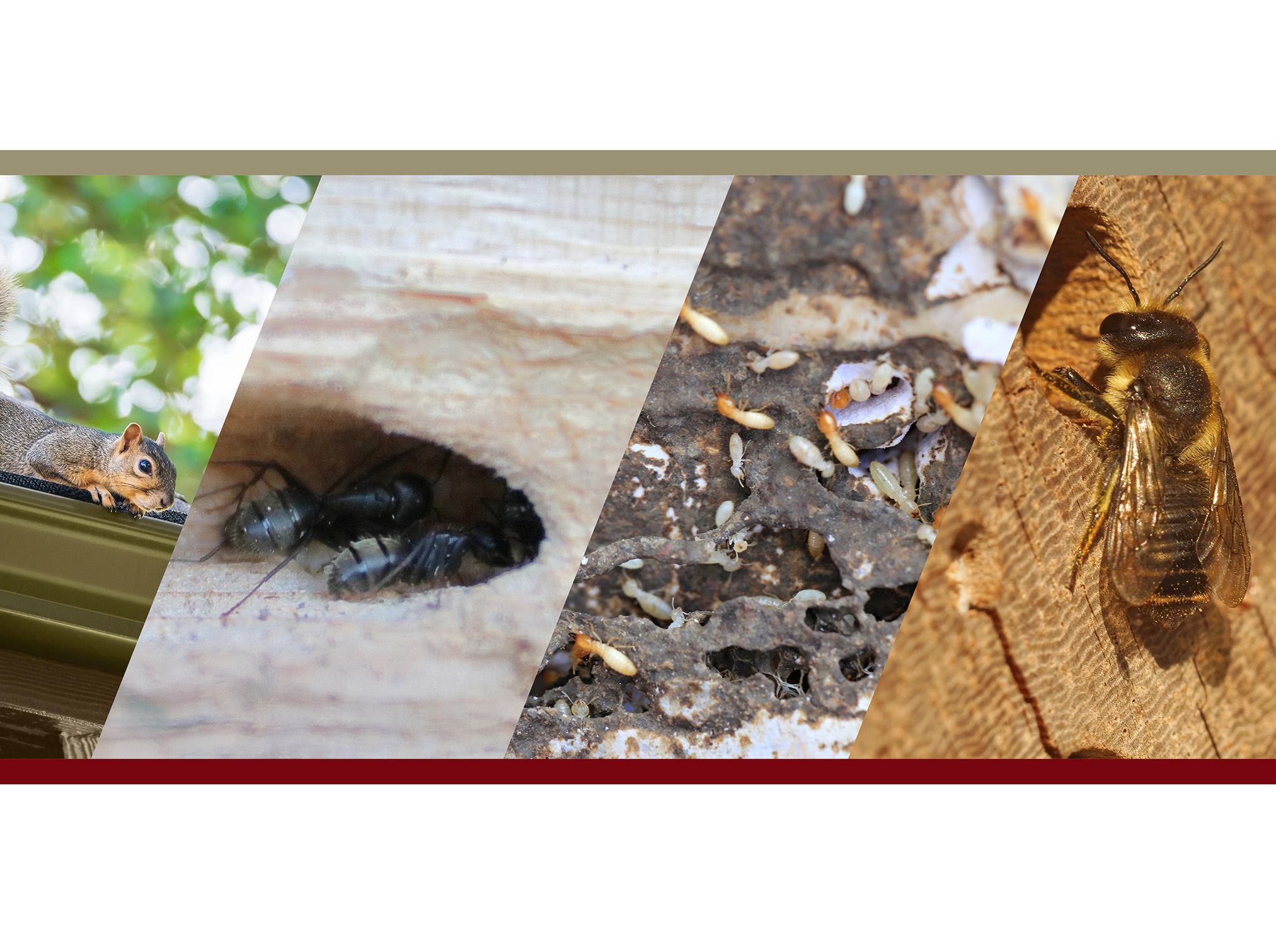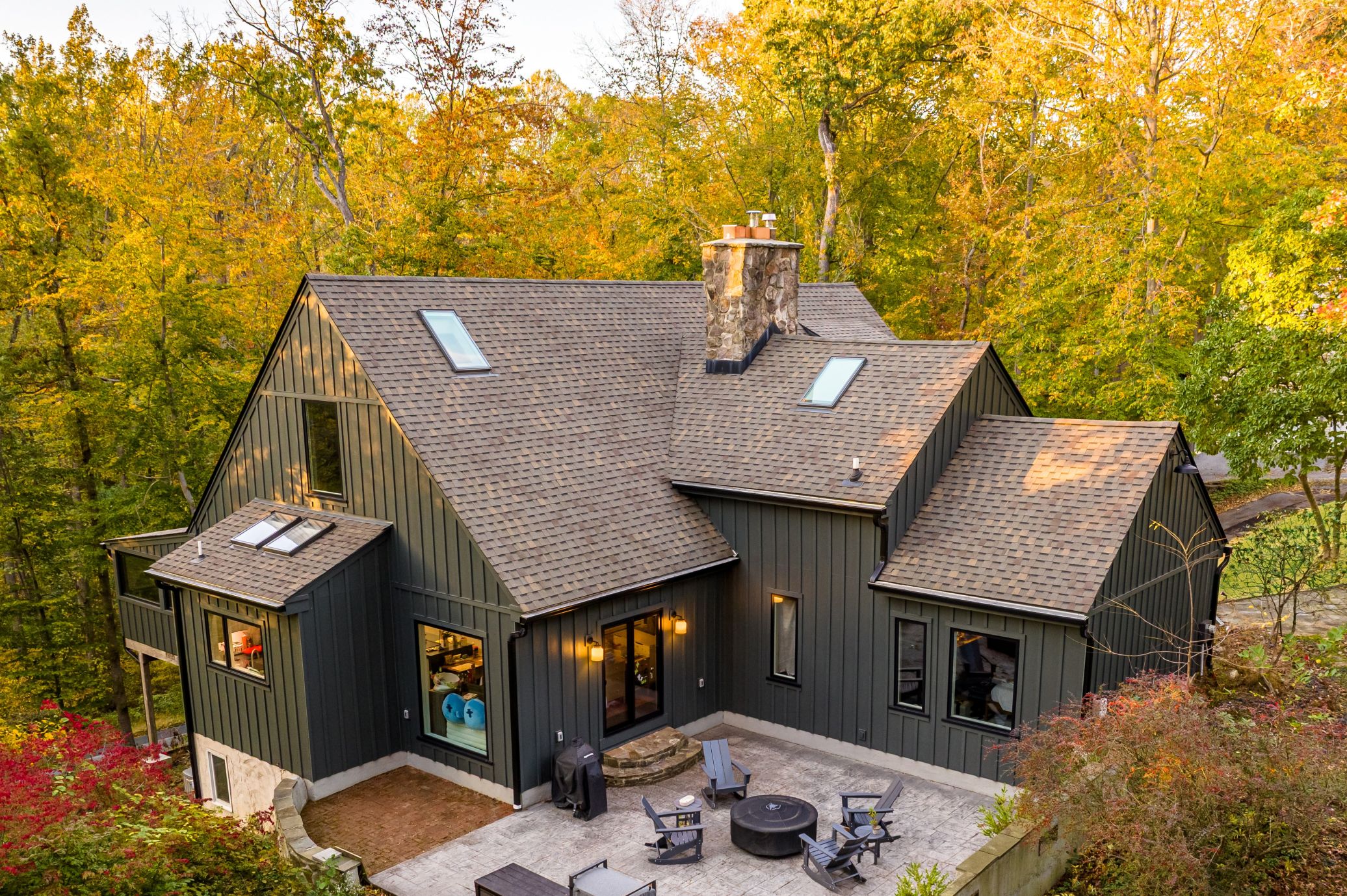Maintenance. It’s an unavoidable part of home ownership. And while many PA homeowners think of home maintenance as things like replacing worn-out siding, roofing, and decks, there’s something even sneakier afoot in this part of the country.
The local critters.
So with this guide, we’re diving into the most common pest issues we see here at Smucker Exteriors. By reading, you’ll learn how to handle existing issues, as well as preventative measures you can take to save yourself potential headaches.
So give this one a skim. It’s a quick read and may save you a lot of money—and hassle—down the line.
Meet the “Usual Suspects” Here in Southeastern Pennsylvania
Consider this the “Most Wanted” list for pests in our region. While some may be cute, don’t be fooled: they can wreak havoc on your home.
- Carpenter Bees: Yes, the world needs more bees. But your home? Not so much. Carpenter bees drill perfect round holes into wooden fixtures that can do serious structural damage if left ignored.
- Termites: No surprises here. Termites are classic wood-gnawers known to chew through framing, floors, and even furniture from the inside out—and they often go unnoticed until the damage is extensive.
- Carpenter Ants: While carpenter ants don’t eat wood, they do tunnel through wooden structures to create nests—leaving behind weakened walls and support beams.
- Mice and Rats: These furry rodents love basements, attics, and crawl spaces—and are known to chew through wires (a fire hazard), insulation, and leave droppings behind throughout your home.
- Squirrels and Raccoons: While cute, squirrels and raccoons can chew through rafters and set up noisy nests in attic spaces. Some can even carry diseases contagious to both humans and pets.
How Often Should I Check My Home for Pest Damage?
In our region, it’s wise to check your home for pests at least twice per year: once in the spring to look for bugs like carpenter bees, termites, and ants becoming more active as the weather warms up, and again in the fall to spot critters like squirrels and raccoons from finding cozy winter hideouts in your attic or basement.
That being said, a quick once-a-month scan is always a good idea as well—and can prevent big headaches further down the line.
What Are Signs of Pest Damage on My Home?
When checking your property for pests, here are the most common things to keep an eye out for:
- Tiny Holes in Wood: Especially under eaves or on decks—a red flag for carpenter bees.
- Mud Tubes on Foundation Walls: A classic sign of termites. These pencil-width tunnels protect them as they move between soil and wood.
- Gnawed Wires and Insulation: Mice, rats, and squirrels may be moving in—also keep an eye out for droppings in corners, cabinets, and near food sources.
- Shingles or Soffits Pulled Apart: Believe it or not, raccoons are strong enough—especially when motivated—to rip into your roofline.
What Should I Do If I Find Signs of Pests on My Home?
Here are the best courses of action should you find pest damage to your property:
- Carpenter Bees and Ants: If caught early, sealing entry holes and treating the area can stop these pests—for more severe infestations, call professional pest control.
- Termites: If you notice signs of termites, call a professional immediately. DIY fixes rarely cut it, and termites can cause tens of thousands of dollars in home damages.
- Mice, Rats, and Squirrels: Use traps to deal with the immediate problem, and then find and close entry points (gaps around pipes, vents, soffits, etc.) with steel wool, caulk, or expanding foam.
- Raccoons: Since raccoons can be aggressive and spread rabies, wildlife control is your best option for removing raccoons. Then, you’ll need to fix entry points and trim back access to your roof to prevent future issues.
How Can I Prevent Pest Damage to My Home?
As the saying goes, prevention is the best medicine—and that goes for pest management as well.
Here’s how to help keep your home pest-free:
- Sealants: Use caulk, steel wool, or mesh to close gaps around pipes, windows, doors, and vents.
- Paint and Seal Wood: Painted and sealed wood is less attractive to carpenter bees and ants.
- Trim Back Landscaping: Trim back tree branches near your roof to prevent easy access for squirrels and raccoons.
- Clean Pantry and Food Areas Regularly: Food crumbs attract rodents—and a tidy basement or pantry is far less inviting.
- Inspect Seasonally: A quick walkaround each spring and fall (more information above) is an excellent way to prevent more expensive problems down the line.
Why Should I Worry About Home Pests in Pennsylvania?
Because at Smucker Exteriors, we know how important your home is. It’s where you and your loved ones live—and if you want to keep it safe and dry (and less expensive over the long haul), checking regularly for pests can save you a whole lot of headaches.
So give your home a quick look today. And if on that walkaround you decide you’re ready for some additional exterior upgrades, give Smucker Exteriors a call. We’ve been helping PA homeowners keep their homes in tip-top shape for over 20 years—and are ready to do the same for you with a free quote today.












